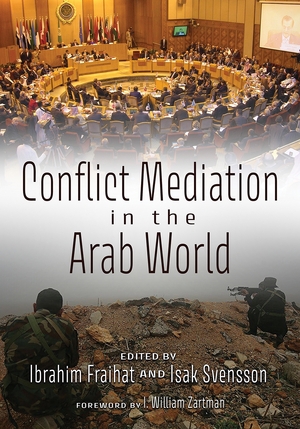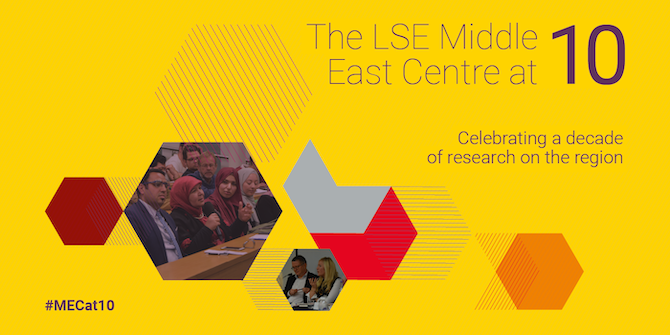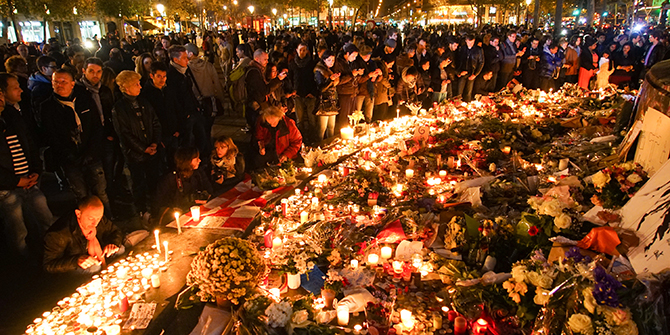by Jenifer Vaughan

Since the end of the Cold War, a central aim of the international system has been to prevent conflicts from escalating by focusing on mediation and resolution; this aim has run up against the hard reality of crises in the Arab region, where conflicts have erupted, escalated or stagnated unresolved.
Conflict Mediation in the Arab World, a volume of 15 case studies, edited by Ibrahim Fraihat and Isak Svensson, with a forward by I. William Zartman, sets out to take a comprehensive approach to conflict mediation in the Arab world, which has lacked successes particularly in the last decade. They examine Syria, Yemen, Israel-Palestine, intra-Palestinian, Libya, Darfur, the Persian/Arabian Gulf, Iraq, Algeria, and Somalia; and note that while the conflicts are increasingly complex in the Arab world, regional institutional response, evident in other areas of the globe, has not risen to match this growing reality.
In examining mediation efforts, the book’s stated aims are twofold: to have a better understanding of mediation processes in the region, perhaps specifically why they are not working; and to advance mediation research forward to make peacemaking more fruitful. It accomplishes both. Levels of analysis include interstate, intrastate and communal conflict. Ripeness for mediation and mediation processes, the book argues successfully, share commonalities among all three, yet exhibit variations depending on the level. This well-rounded approach to researching mediation in the Arab world introduces valuable nuances to the current body of literature.
Conflict Mediation in the Arab World is well organised in three segments, the first reviews trends in the region and fundamental issues pertaining to mediation; the second, provides in-depth examinations of key mediation challenges; and the third, analyses mediation dynamics at the intrastate, local level.
The opening chapter lays a solid base for the material that follows. In it, Peter Wallensteen and Stina Högbladh use empirical data to look for reasons why the Arab world has a poor peacemaking record in comparison to Africa, where a greater number of agreements have occurred. They do so by examining, among other things, both regions colonial legacies, vast resources, and political ideologies that reach beyond state borders.
This is followed by Laurie Nathan’s look at exclusionary approaches to conflict resolution focusing on Libya, Syria, and Yemen. A mandate is often taken for granted, and it is of critical importance in mediation in that is creates the parameters of the talks and molds the mediation dynamics. However, the role of the mandate, which also empowers the mediator with authority, is not explored extensively in existing literature. Nathan notes that while there may exist strong normative considerations for a mandate that is exclusionary – defined as one that explicitly or tacitly excludes a conflict party or its leader – mandates cannot depend on ‘wishful thinking for their realisation.’ The pragmatic question of whether such a mandate can accomplish peace and stability needs to be the overriding consideration.
Most of the volume’s chapters are situated within the book’s second part, which delves into significant mediation cases, each with its own distinct characteristics. To consider multifaceted dynamics that can be at play in complex conflicts, Syria is a good place to start.
I. William Zartman addresses the prolonged and intractable Syrian conflict, one in which resolution has alluded even the most experienced mediators. Zartman argues persuasively concluding that while three highly-experienced mediators worked diligently against odds that were considerably unfavorable, the parties to the conflict were not interested, ‘and their patrons buttressed their disinterest.’
Looking at the Syrian conflict however through a wider lens, Magnus Lundgren argues that UN efforts to use ‘standard treatment’ for civil war, i.e. using political negotiations, preferably with the help of mediation to end conflicts and agree to a settlement that will be supported by/under the guardianship of the international community, may not be fit for purpose; it is an outdated prescription suited to ‘permissive post–Cold War conditions.’ In the Syria case, a ‘standard treatment’ requires, among other conditions, a shred of cooperation from the ruling power; cooperation lacking in Syria, Lundgren states.
There is no handy roadmap for successful mediation, however, by focusing on the design and execution of the mediation processes, and secondly, by considering the intricacies of the context, the contributors thoughtfully re-examine core assumptions.
The comparative analysis of Palestine mediation by Love Calissendorff and Mimmi Söderberg Kovacs, delves into six rounds of mediation efforts between Fatah and Hamas from 2007 to 2019. They note that even though intra-Palestinian dialogue has profound importance not only for local politics, but regional as well – it is under researched. The authors find that while there are crucial elements related to implementation as well as the durability of agreements, including built-in safeguard mechanisms and involvement of both internal and external actors, a key factor relates to the sequencing of reforms during the implementation of an agreement – not perhaps the most intuitive premise.
Chapters that address less studied mediation dynamics include a look at American resistance to mediating the diplomatic crisis in the Gulf. As the number of potential international mediators are on the rise, how should one view the role of the ‘reluctant’ mediator is a question of growing relevance. Sinisa Vukovic and Danielle Martin explore why the United States did not want to mediate the Persian/Arabian Gulf crisis that ran from 2017 to 2020 even though the country had the means and the skills to do so. The authors argue that a third party is hesitant to mediate in a conflict where there is symmetry of power among conflict actors, and strong structural ties between the third party and parties to the conflict, and in situations where the third party has pronounced strategic considerations – in this case, security, economic and military – that could be negatively impacted. Maintaining the status quo is perceived as the best course of action; ‘the cost of involvement exceeds potential gains.’
Additionally, Allard Duursma’s chapter focuses on the 2006 Darfur Peace Agreement, investigating the function of mediation in the salvaging or reviving a seemingly failed mediation process. Follow-up mediation, among other things, Duursma concludes, can help resuscitate a peace process by assisting parties to the conflict to work through ambiguous, outstanding or unforeseen matters.
While there is at times a feeling of redundancy in some of the material, perhaps necessary in that the chapters touch on some of the same subjects, the authors of this book employ diverse methodological approaches, which makes for overall well-constructed pacing, helping to keep the reader engaged with material that sometimes can be rather tense or detailed, and through some material or contexts which may be unfamiliar to even those working in the field of mediation.
For example, in one of the best-written chapters, The Legitimacy Puzzle in the United Nations Mediation of the Libyan Conflict, Mohammed Cherkaoui, who served on a United Nations Panel of Expert, uses his firsthand experience to provide an excellent summary of the state of play in Libya delving into the key factors confronting and often deflating UN mediation efforts – the internal and external elements as well as confluence of a multitude of factors, including counterterrorism, migration, and proxy politics.
In a different approach to reviewing mediation efforts, in the volume’s third section, focused on local dynamics, Massaab al-Aloosy adds relevant interviews he conducted to bolster his study related to sectarianism in Iraq. He concludes that facilitating reconciliation between Sunnis and Shi‘as at the national tier demands a thorough and patient examination, a sustained, long-term strategy, and substantial resources.
Peacemaking most often commences within a limited and predominantly male-dominated group of conflict parties and mediators; the field of peace and security is dominated by men. Perhaps an aside – but all too often literature covering such topics perpetuates the underrepresentation of women’s view – demonstrating limited comprehension of how diversity can change and enhance the conversation. This reviewer was pleasantly surprised to see that roughly a third of the contributors of this volume were women.
The book closing chapter by Mary Hope Schwoebel tackles the situation in southern Somalia – which has remained a challenging research environment since the rise of Al Shabaab – looking at the effect that the terrorist group has had on tribal mediation. As Hope Schwoebel concludes the transformations within Somali culture throughout decades of conflict, international peacekeeping, peacemaking, peacebuilding, and state-building efforts, coupled with the impact of diverse Islamist groups and the movements of its diverse diaspora, remain insufficiently explored and researched.
The unequivocal failure to resolve the many conflicts noted in the book, or even inch some of them closer to resolution, does not make for optimistic reading, however, the book’s ample offering of new insights is to be commended.
[To read more on this and everything Middle East, the LSE Middle East Centre Library is now open for browsing and borrowing for LSE students and staff. For more information, please visit the MEC Library page.]






